Nickel dibutyldithiocarbamate
- CAS NO.:13927-77-0
- Empirical Formula: C18H36N2NiS4
- Molecular Weight: 467.45
- MDL number: MFCD00067273
- EINECS: 237-696-2
- SAFETY DATA SHEET (SDS)
- Update Date: 2024-12-18 14:08:52
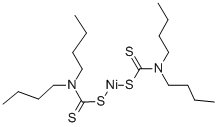
What is Nickel dibutyldithiocarbamate ?
Chemical properties
Dark-green flakes.
The Uses of Nickel dibutyldithiocarbamate
Antioxidant for synthetic rubbers.
Flammability and Explosibility
Not classified
Safety Profile
Low toxicity by ingestion.Confirmed human carcinogen with experimentaltumorigenic data.
Properties of Nickel dibutyldithiocarbamate
| Melting point: | 86°C |
| Boiling point: | 450.81°C (estimate) |
| Density | 1,26 g/cm3 |
| vapor pressure | 0.081Pa at 25℃ |
| Flash point: | 260°C |
| storage temp. | under inert gas (nitrogen or Argon) at 2-8°C |
| solubility | Practically insoluble in water |
| form | powder to crystal |
| color | Green crystals from C6H6/EtOH |
| Specific Gravity | 1.26 |
| Water Solubility | 8.93μg/L at 20℃ |
| Hydrolytic Sensitivity | 4: no reaction with water under neutral conditions |
| CAS DataBase Reference | 13927-77-0(CAS DataBase Reference) |
| NIST Chemistry Reference | Bis(dibutyldithiocarbamate)nickel complex(13927-77-0) |
| EPA Substance Registry System | Nickel dibutyldithiocarbamate (13927-77-0) |
Safety information for Nickel dibutyldithiocarbamate
| Signal word | Danger |
| Pictogram(s) |
 Health Hazard GHS08 |
| GHS Hazard Statements |
H317:Sensitisation, Skin H334:Sensitisation, respiratory H350:Carcinogenicity H372:Specific target organ toxicity, repeated exposure H413:Hazardous to the aquatic environment, long-term hazard |
| Precautionary Statement Codes |
P201:Obtain special instructions before use. P202:Do not handle until all safety precautions have been read and understood. P260:Do not breathe dust/fume/gas/mist/vapours/spray. P264:Wash hands thoroughly after handling. P264:Wash skin thouroughly after handling. P270:Do not eat, drink or smoke when using this product. P272:Contaminated work clothing should not be allowed out of the workplace. P273:Avoid release to the environment. P280:Wear protective gloves/protective clothing/eye protection/face protection. P284:Wear respiratory protection. P308+P313:IF exposed or concerned: Get medical advice/attention. P405:Store locked up. P501:Dispose of contents/container to..… |
Computed Descriptors for Nickel dibutyldithiocarbamate
Nickel dibutyldithiocarbamate manufacturer
New Products
Tert-butyl bis(2-chloroethyl)carbamate (S)-3-Aminobutanenitrile hydrochloride N-Boc-D-alaninol N-BOC-D/L-ALANINOL 3-(2,4-Dimethoxybenzyl)dihydropyrimidine-2,4(1H,3H)-dione 7-Bromo-1H-indazole N-octanoyl benzotriazole 3,4-Dibenzyloxybenzaldehyde 4-Hydrazinobenzoic acid Electrolytic Iron Powder Fmoc-Val-Cit-PAB 1,1’-CARBONYLDIIMIDAZOLE R-2-BENZYLOXY PROPIONIC ACID 4-HYDROXY BENZYL ALCOHOL 1,1’-CARBONYLDI (1,2-4 TRIAZOLE) S-2-CHLORO PROPIONIC ACID (2-Hydroxyphenyl)acetonitrile 4-Bromopyrazole 5-BROMO-2CYANO PYRIDINE 5,6-Dimethoxyindanone 5-broMo-2-chloro-N-cyclopentylpyriMidin-4-aMine 1-(4-Methylphenylsulfonyl)-1H-1,2,3-benzotriazole 1-(2-Chlorobenzyl)-4-nitro-1H-pyrazole 1-(2-Nitrophenyl)-4-phenylpiperazineRelated products of tetrahydrofuran
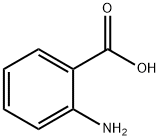
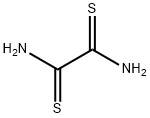
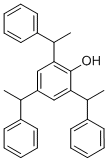
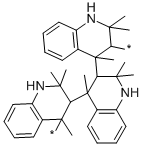


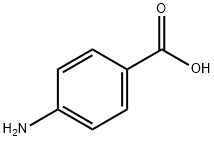

You may like
-
 13927-77-0 Nickel dibutyldithiocarbamate 98%View Details
13927-77-0 Nickel dibutyldithiocarbamate 98%View Details
13927-77-0 -
 Nickel(II) Dibutyldithiocarbamate CAS 13927-77-0View Details
Nickel(II) Dibutyldithiocarbamate CAS 13927-77-0View Details
13927-77-0 -
 Ste-Glu-AEEA-AEEA-OSUView Details
Ste-Glu-AEEA-AEEA-OSUView Details
1169630-40-3 -
 1446013-08-6 Fmoc-His-Aib-OH TFA 98%View Details
1446013-08-6 Fmoc-His-Aib-OH TFA 98%View Details
1446013-08-6 -
 127464-43-1 99%View Details
127464-43-1 99%View Details
127464-43-1 -
 Chloro Uracil 99%View Details
Chloro Uracil 99%View Details
1820-81-1 -
 2-ETHYLPYRIDINE 100-71-0 99%View Details
2-ETHYLPYRIDINE 100-71-0 99%View Details
100-71-0 -
 13162-05-5 99%View Details
13162-05-5 99%View Details
13162-05-5
Statement: All products displayed on this website are only used for non medical purposes such as industrial applications or scientific research, and cannot be used for clinical diagnosis or treatment of humans or animals. They are not medicinal or edible.